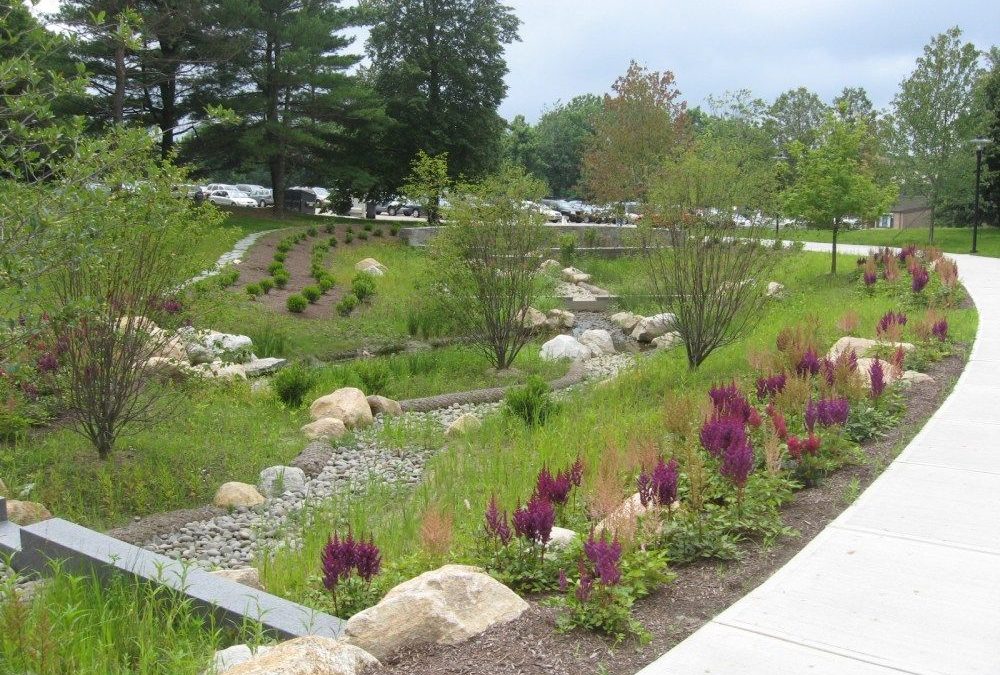Bioretention areas, also sometimes called rain gardens, are the post-construction stormwater treatment measure of choice for commercial developments in the Bay Area. Civil engineering design often utilizes this Low Impact Development (LID) practice that combines aesthetic landscaping with engineered stormwater management systems designed to remove pollutants through natural processes. According to the San Francisco Bay Water Quality Control Board, “In the San Francisco Bay watershed, urbanization and agricultural runoff is generally considered to be the largest source of pollutants to aquatic systems.” Stormwater in cities picks up debris, oil, chemicals, etc. from impervious streets and sidewalks and washes it down the storm drain and into surrounding bodies of water rather than sinking into the ground like rainfall does in an undeveloped area. According to the C.3 Technical Guidance Handbook, a bioretention area is:
“…designed to have a surface ponding area that allows for evapotranspiration and to filter water through 18 inches of engineered biotreatment soil. After the water filters through the engineered soil, it encounters a 12-inch layer of rock in which an underdrain is typically installed. Bioretention areas may be lined or unlined depending on the hydraulic conductivity rate of the underlying soils.”
Bioretention areas are filled with plants that flourish while being partially submerged. The combination of these plants and underlying layers of soil and rock filter out much of the pollutants that would normally go through the storm drain system and into the Bay, as well as allowing some moisture to evaporate back into the atmosphere like it would from an open field or similar undeveloped land. In some bioretention areas, the water can slowly filter back into the ground without the use of an underdrain, further mimicking the way rain would soak into the ground on undeveloped land.
In 1977, the Clean Water Act was passed, in part to address the negative effects of stormwater runoff in urban and agricultural areas. Under the Clean Water Act, the EPA established the National Pollutant Discharge Elimination System (NPDES), which regulates allowable levels of certain chemical pollutants and requires polluters to obtain permits for chemicals discharged into surface waters.
As a result of increased regulation on pollutants entering waterways, many states have adopted sustainable practices like Low Impact Development to encourage more effective stormwater management. Since 2009, bioretention has been the Bay Area’s stormwater management method of choice, replacing bioswales. Bioretention works well on most sites but can be constrained by steep slopes, a high ground water table or soil impermeability. A civil engineer can determine the best stormwater methods for each project.
In some situations, flow-through planters have become an acceptable method for treating stormwater when bioretention is not feasible like when in close proximity to a building, or where soil moisture is a possible concern. In sites with size constraints, steep slopes or poorly-draining soils, the smaller size and impervious bottom of a flow-through planter allows for the treatment of stormwater runoff and discharge to a storm drain, much like some bioretention areas. However, flow-through planters are limited in respect to re-use of stormwater and must account for the possibility of overflow.


